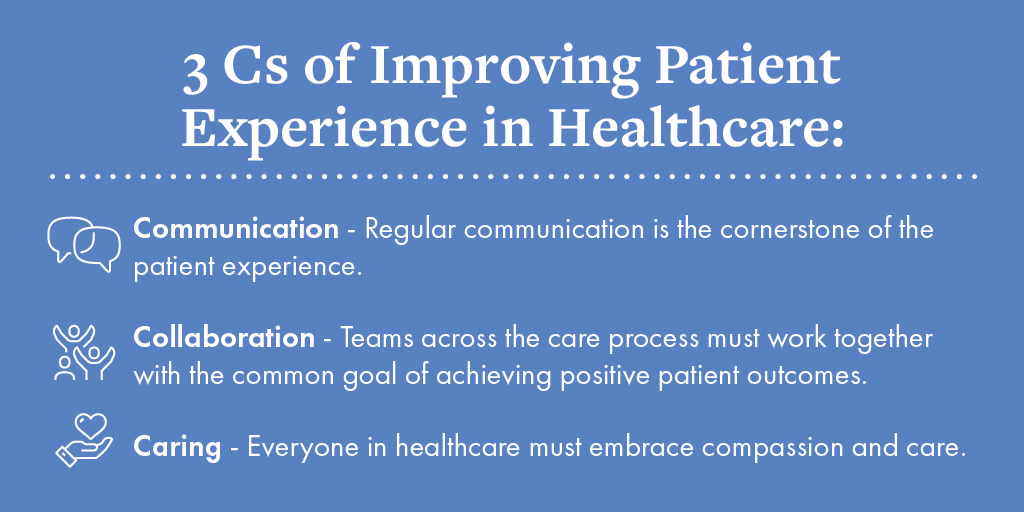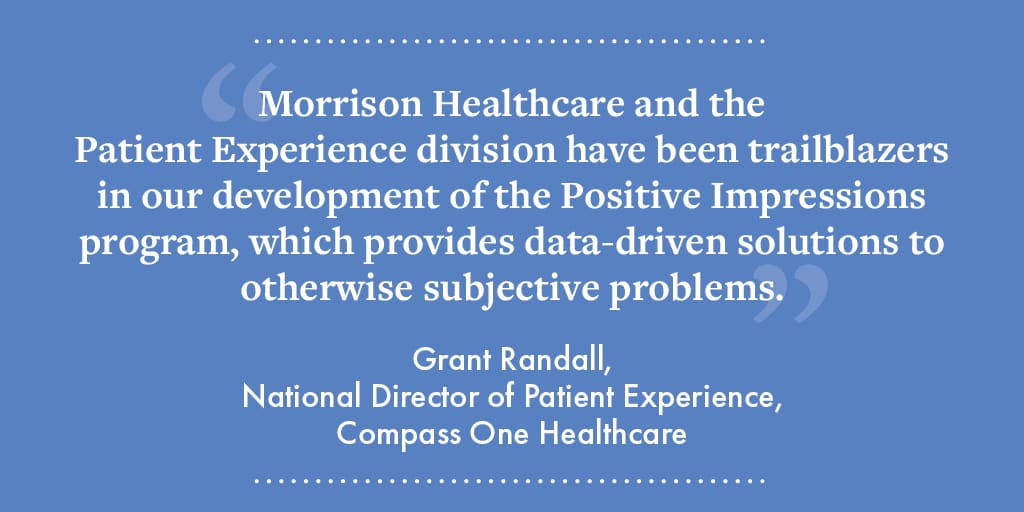In healthcare, patients have become consumers. It is more important than ever to create quality, value-oriented experiences that drive positive repeat business and word-of-mouth. Through a heightened focus on patient satisfaction scores, hospitals can become the healthcare destination of choice and drive revenue. To make this happen, hospitals need to improve the patient experience in healthcare. As a result, Morrison Healthcare has invested in patient experience mangers (PEM) to elevate the service and engagement with patients.
PEMs play an essential role in the hospital by rounding on patients, engaging staff and nursing, and providing critical data reports for the department. Foodservice is a crucial component of their roles. Once the kitchen has put out a fantastic meal, the PEM works on elevating the scripting and delivery, so that the patient’s idea of ‘hospital food’ is completely transformed.
Lori Baxter serves as a System-level PEM for North Mississippi Health Services, a seven-hospital system in her hometown. Through Baxter’s work, patients feel comfort from her watchful eye and compassionate conversations, both of which have a lasting impression on outcomes and patient experience scores.
“We want patients to know we’re listening,” said Baxter. “Patients should know they have options when it comes to the food they’re served. That can make a huge difference in a patient’s outlook and can extend beyond food & nutrition services. Through conversations during rounding, we can find out about the patient’s experience across the entire healthcare environment. It can lead to improvements in their care across numerous areas—not just food & nutrition services.”
PEMs play an important role in boosting patient experience. Their contribution can be summed into the 3 Cs of Improving Patient Experience in Healthcare: Communication, Collaboration, and Caring. With a focus on these critical areas, PEMs like Baxter are able to improve patient satisfaction scores.
“Coming from a career in healthcare, I have seen the benefits of this role and the importance of focusing on patient experience,” Baxter said. “If patients are happy, everyone is happy.”
The 3 Cs of Improving Patient Experience in Healthcare
Communication
Regular communication is the cornerstone of the patient experience. Small interactions and touchpoints can have a significant impact.
Like Baxter, Carola Sangster works as a system-level PEM. She began in patient experience in 2015 and was promoted to her system-level role for eight hospitals in South Florida last year. Sangster says creating communication channels are necessary to boost patient experience scores.
“I’m always evaluating communication between departments to make sure information is flowing well through all levels, including management, the frontline, and patients,” said Sangster.
In food & nutrition services, Sangster has found gaps in communication, which can lead to breakdowns in service and expectations. While training goes a long way to solving the communication gap with patients, it is not the only answer. Managers and frontline employees must have a compassionate, service-minded approach to communication.
“We need to communicate with patients and get them involved in their care,” said Sangster. “We are in a hospital. This is customer service. It’s very important to be a people person. To have the ability to listen and observe is huge. Even a quick conversation can be huge and impact the patient.”

Collaboration
Collaboration is part of successful communication. You can’t have one without the other, but collaboration extends beyond just communicating. Teams across the care process must work together with the common goal of achieving positive patient outcomes.
The PEM plays a vital role in making this happen—most importantly, with the nursing team.
“Collaboration with the nursing staff is huge,” said Sangster. “Nurses are the ones who have the most interaction with patients, so we need to communicate and collaborate to make sure patients get what they need.”
The success of patient experience programs will be tied to how PEMs communicate with patients and collaborate with nurses.
“Build a relationship with nurses. Share in the patient satisfaction scores, so you can work together to solve problems and fix processes. That makes everyone feel included so you can work together.”
Caring
Everyone in healthcare must embrace compassion and care. Most often, we think of caring in terms of providing direct patient care, but that couldn’t be further from the truth. Caring extends to the Food & Nutrition Services team and anyone who encounters a patient. Each interaction is an opportunity to have a conversation and make a difference in the patient’s experience.
In today’s healthcare environment, patients often feel they don’t have control over their hospital stay, but foodservice is one area where they can influence their experience. PEMs play a critical role in giving patients this level of control.
“The key driver with patient satisfaction is letting the patient know they have options,” said Baxter. “Patients are often surprised to know that they have choices and options. This small interaction can change a patient’s experience.”
Baxter says the best part of her day is talking with patients. She sees anywhere between 25-75 patients a day, ensuring that each patient has what he needs and feels cared for.
“You might have a million other things, but when you’re with a patient, be in the moment,” said Baxter.
Caring, as with collaboration, is related to communication. It’s not enough to go down a checklist. Each patient interaction is about creating quality time, having a conversation, and answering questions.
Improving patient experience with data
Patient experience managers have a place in every facility. As part of Compass One Healthcare, Morrison Healthcare has access to the latest research and programs. The Positive Impressions program is a unique offering that can have staggering results for a hospital’s patient satisfaction scores.
“Our Positive Impressions program isn’t based on assumptions, said Grant Randall, National Director of Patient Experience, Compass One Healthcare. “Morrison Healthcare and the Patient Experience division have been trailblazers in our development of the Positive Impressions program, which provides data-driven solutions to otherwise subjective problems. While patient preferences vary, we look to research to reveal key areas and programs where resources can be strategically placed to drive patient satisfaction.”

PEMS bring quantifiable results to hospitals, but the role is best summed up as a desire to help patients.
“At the end of the day, you want to have your food hot and your room clean,” said Sangster. “We need to make that happen. Overall, we want to make sure the patient is happy so they have a good experience.”
Through communication, collaboration, and caring, PEMs across the country are improving our patients’ experience and having a lasting impact on their communities.




